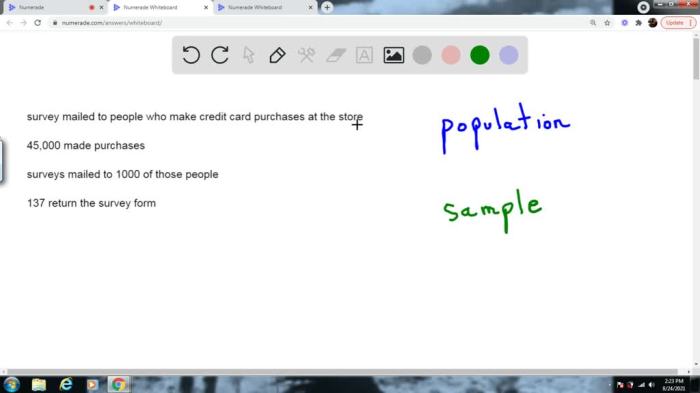A department store mails a customer satisfaction survey, embarking on a journey to gather invaluable feedback and insights from its valued clientele. This survey serves as a crucial tool, enabling the store to gauge customer experiences, identify areas for improvement, and ultimately enhance its offerings to align with the evolving needs and expectations of its discerning shoppers.
Through meticulously crafted questions and targeted distribution channels, the survey delves into the heart of customer perceptions, uncovering actionable insights that will shape the future of the store’s customer-centric initiatives.
Customer Survey Distribution

Customer satisfaction surveys are typically distributed through a variety of channels, including:
- Emails are a convenient and cost-effective way to reach a large number of customers.
- Surveys can be embedded directly into the email or linked to an external survey platform.
SMS
- SMS surveys are a good option for reaching customers on mobile devices.
- However, SMS surveys are typically limited to a small number of questions.
In-Store Kiosks, A department store mails a customer satisfaction survey
- In-store kiosks provide customers with an opportunity to complete surveys while they are in the store.
- Kiosk surveys can be particularly useful for gathering feedback on specific products or services.
It is important to target the right audience for effective feedback. For example, a survey about a new product should be sent to customers who have purchased that product.
Survey Design and Content

Customer satisfaction surveys typically include a combination of question types, such as:
Multiple Choice Questions
- Multiple choice questions are easy to answer and can be used to gather data on a variety of topics.
- However, multiple choice questions can be limiting, as they only allow customers to choose from a predefined set of answers.
Open-Ended Questions
- Open-ended questions allow customers to provide more detailed feedback.
- However, open-ended questions can be more difficult to analyze than multiple choice questions.
It is important to use clear and concise question wording. Customers should be able to easily understand what each question is asking.
Data Collection and Analysis
Once surveys have been distributed, the next step is to collect and analyze the responses. Data collection can be done manually or through the use of survey software.
Descriptive Statistics
- Descriptive statistics provide a summary of the data, such as the mean, median, and mode.
- Descriptive statistics can be used to identify trends and patterns in the data.
Regression Analysis
- Regression analysis is a statistical technique that can be used to determine the relationship between two or more variables.
- Regression analysis can be used to identify factors that are influencing customer satisfaction.
It is important to ensure that the data is accurate and reliable. This can be done by using a variety of data quality checks.
Customer Feedback and Insights

The results of customer satisfaction surveys can be used to gather customer feedback and insights. This feedback can be used to improve products and services, as well as to develop new marketing campaigns.
Actionable Insights
- Actionable insights are insights that can be used to make concrete changes to a business.
- For example, a survey might reveal that customers are dissatisfied with the checkout process. This insight could be used to implement changes to the checkout process to improve customer satisfaction.
It is important to listen to customer feedback and respond accordingly. This shows customers that their feedback is valued and that their opinions matter.
Survey Optimization and Improvement: A Department Store Mails A Customer Satisfaction Survey
The survey process can be optimized and improved over time. This can be done by:
Best Practices for Survey Design and Distribution
- Use a variety of question types.
- Keep surveys short and to the point.
- Use clear and concise question wording.
- Target the right audience.
Ongoing Evaluation and Refinement
- Regularly review survey results to identify areas for improvement.
- Make changes to the survey based on the feedback received.
- Retest the survey to ensure that the changes have improved the results.
By following these best practices, businesses can ensure that their customer satisfaction surveys are effective and provide valuable insights.
Questions Often Asked
What is the purpose of a customer satisfaction survey?
A customer satisfaction survey aims to gather feedback from customers to assess their experiences, identify areas for improvement, and enhance overall customer satisfaction.
How are customer satisfaction surveys distributed?
Customer satisfaction surveys can be distributed through various channels, including email, SMS, in-store kiosks, and online platforms.
What types of questions are typically included in a customer satisfaction survey?
Customer satisfaction surveys often include a mix of multiple-choice questions, open-ended questions, and rating scales to gather both quantitative and qualitative feedback.